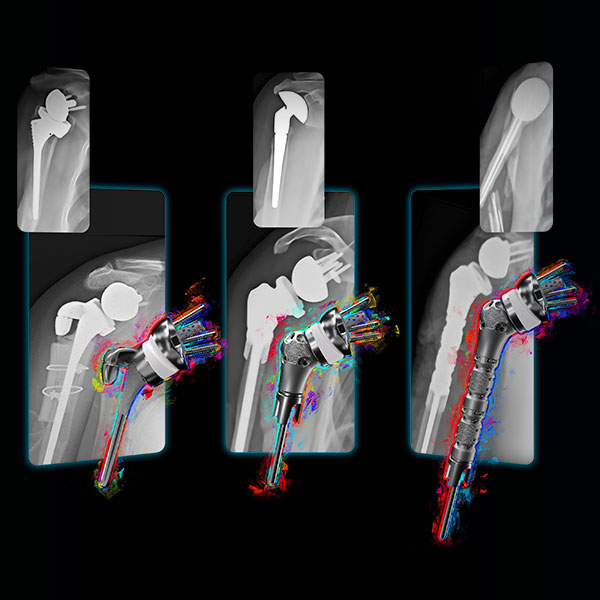Exactech is Mastering Humeral Solutions with the new Humeral Augmented Tray and the Humeral Reconstruction Prosthesis, as well as the new humeral planning features of the Equinoxe® Planning App.
Mastering the Art of Innovation and Science
Equinoxe® Humeral Solutions

The Equinoxe® Reverse
A masterpiece right from the start, solving unmet clinical challenges and generating many more “firsts” in shoulder arthroplasty.

FIRST
to offer reverse augments

ST
TO MARKET
with biomechanically designed humeral reconstruction system

orthopaedic company to globally launch navigation for shoulder
SOLUTIONS FOR 100%
of shoulder arthroplasty procedures, from straightforward to challenging
PEER-REVIEWED JOURNAL ARTICLES
Reverse
0.5%
3X
IMPROVEMENT
in external rotation post-op7
98%
& 85%
in initial fixation10
1.5%
78%
Platform Stem6
10%
15+Y
RIGHT FROM THE START
and still innovating
The Equinoxe® Reverse
A masterpiece right from the start, solving unmet clinical challenges and generating many more “firsts” in shoulder arthroplasty.

FIRST
to offer reverse augments

ST
TO MARKET
with biomechanically designed humeral reconstruction system

orthopaedic company to globally launch navigation for shoulder
SOLUTIONS FOR 100%
of shoulder arthroplasty procedures, from straightforward to challenging
PEER-REVIEWED JOURNAL ARTICLES
Reverse
0.5%
3X
IMPROVEMENT
in external rotation post-op7
98%
& 85%
in initial fixation10
1.5%
78%
Platform Stem6
10%
15+Y
RIGHT FROM THE START
and still innovating
What Surgeons Are Saying
Learn More about Reverse Biomechanics
Biomechanical Summary of Reverse Shoulder Arthroplasty
Equinoxe Ergo Instruments for Reverse Shoulder
From Planning to Placement: ExactechGPS Shoulder
Equinoxe Preserve Stem rTSA Operative Technique Overview
- Greene, A. et al. Navigated vs. non-navigated results of a CT based computer assisted shoulder arthroplasty system in 30 cadavers. Presented at ISTA 2018.*
- Simovitch, R. et al. Effect of tuberosity healing on clinical outcomes in elderly patients treated with a reverse shoulder arthroplasty for 3- and 4-part proximal humerus fractures. J Orthop Trauma 33(2), e39-e45. 2019.
- Mollon, B. et al. Impact of scapular notching on clinical outcomes after reverse total shoulder arthroplasty: an analysis of 476 shoulders. J Shoulder Elbow Surg. 26(7), 1253–1261. 2017.
- King, J. et al. How common are acromial and scapular spine fractures after reverse shoulder arthroplasty? Bone Joint J 2019;101-B:627–634.
- Friedman, RJ. et al. Comparison of reverse total shoulder arthroplasty outcomes with and without subscapularis repair. J Shoulder Elbow Surg. Apr;26(4):662-668. 2017.
- Crosby, L. et al. Conversion to reverse total shoulder arthroplasty with and without humeral stem retention: the role of a convertible platform stem. J Bone Joint Surg Am. 2017 May 3;99(9):736-742.
- Friedman RJ. et al. Comparison of reverse total shoulder arthroplasty outcomes with and without subscapularis repair. J Shoulder Elbow Surg. 2017 Apr;26(4):662-668.
- Kersten, AD. et al. Posterior augmented glenoid designs preserve more bone in biconcave glenoids. J Shoulder Elbow Surg. 2015 Jul;24(7):1135-41. AND Roche, C. et al. Biomechanical impact of posterior glenoid wear on anatomic total shoulder arthroplasty. Bulletin for the Hospital for Joint Diseases. 71(2):S5-11. 2013.
- Friedman, RJ. et al. Clinical and radiographic comparison of a hybrid cage glenoid to a cemented polyethylene glenoid in anatomic total shoulder arthroplasty. Article in press. J Shoulder Elbow Surg (2019) -, 1-9.
- Stroud, N. et al. Initial glenoid fixation using two different reverse shoulder designs with an equivalent center of rotation in a low-density and high-density bone substitute. J Shoulder Elbow Surg (2013) 22, 1573-1579. AND Stroud, N. et al. Reverse shoulder glenoid loosening: an evaluation of the initial fixation associated with six different reverse shoulder designs. Bulletin of the Hospital for Joint Diseases 2013;71(Suppl 2):S12-7.*
- Simovitch, R. et al. Quantifying success after total shoulder arthroplasty: the minimal clinically important difference. J Shoulder Elbow Surg (2018) 27, 298–305.
- Nashikkar P., et al. Role of intraoperative navigation in the fixation of the glenoid component in reverse total shoulder arthroplasty: a clinical case-control study. J Shoulder Elbow Surg. 2019 Sept.;28(9):1685-1691.
- Nashikkar P., et al. Computer navigation re-creates planned glenoid placement and reduces correction variability in total shoulder arthroplasty: an in vivo case-control study. J Shoulder Elbow Surg. 2019 July 25. Article in press.
- Roche C., et al. Impact of screw length and screw quantity on rTSA glenoid fixation for two different sizes of glenoid baseplates. JSES Open Access (JSESOA-D-19-00048R1).*
- Greene A., et al. Clinical Use of a Computer Assisted Anatomic Total Shoulder Arthroplasty System: An Analysis of 574 Cases. Presented at CAOS 2019.
- Greene A., et al. Clinical Use of a Computer Assisted Reverse Total Shoulder Arthroplasty System: An Analysis of 1702 Cases. Presented at CAOS 2019.
